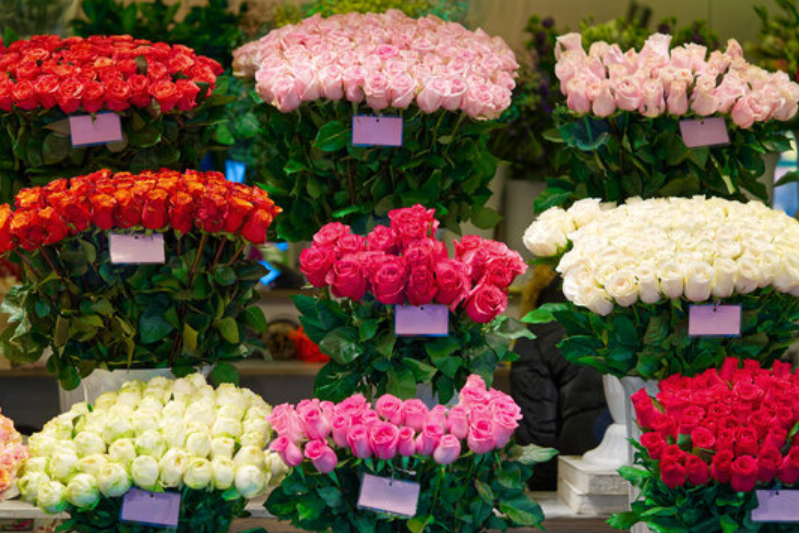
Flower arranging is a delightful and creative art enjoyed for centuries. Whether you’re arranging flowers for a wedding, special event, or to brighten up your home, choosing a theme for your arrangement can add sophistication and cohesiveness.
First, let’s discuss the importance of choosing a theme. A theme can tie your flower arrangements together and give it a sense of purpose. It can also help you decide what flowers, colors, and accessories to use. Additionally, a theme can make your arrangement more visually exciting and memorable.
Seasonal Themes
One of the easiest ways to create a theme for your flower arrangement is to choose flowers in season. This can help you create a cohesive look and ensure your flowers are fresh and readily available. For example, in the spring, you might choose pastel-colored stems such as tulips, daffodils, and hyacinths.
In the summer, you might choose bright and bold colors such as sunflowers, zinnias, and dahlias. In the fall, you might select warm, rich colors such as mums, marigolds, and asters. And in the winter, you might choose cool and crisp colors such as white roses, lilies, and poinsettias.
Color Themes
Another way to create a theme for your arrangement is to choose a color scheme. This can be a monochromatic color scheme (using different shades of the same color), an analogous color scheme (using colors that are next to each other on the color wheel), or a complementary color scheme (using colors that are opposite each other on the color wheel).
For example, a monochromatic color scheme might use different shades of pink, from pale blush to deep magenta. An analogous color scheme might use shades of yellow, orange, and red. And a complementary color scheme might use purple and yellow or blue and orange.
Style Themes
You can also create a theme for your arrangement based on a particular style.
Some popular types include:
- Romantic: This style often uses soft, pastel colors and delicate buds such as roses, peonies, and ranunculus. The arrangement may also include ribbon or lace accents.
- Modern: This style often uses bold, geometric shapes and bright, contrasting colors. Stems such as anthuriums, proteas, and orchids may be used.
- Rustic: This style often uses natural materials such as twine, burlap, or wood, and includes flowers such as sunflowers, dahlias, and wildflowers.
- Tropical: This style often uses exotic flowers such as hibiscus, bird of paradise, and ginger, and may also include palm fronds or other tropical foliage.
Occasion Themes
Another way to create a theme for your arrangement is by choosing a particular occasion. For instance, wedding bouquets usually feature soft and romantic blooms like roses, peonies, and hydrangeas. The color scheme of the arrangement may complement the wedding colors or the season.
You may want to incorporate the recipient’s favorite flowers or colors for birthday bouquets. Alternatively, you can use bright and cheerful flowers such as daisies, sunflowers, and gerbera daisies to create a festive vibe.
In contrast, sympathy bouquets tend to use white or pale-colored flowers like lilies, roses, and orchids. These arrangements may also include greenery or foliage to evoke a sense of calm and comfort during difficult times.
Tips for Creating a Theme for Your Flower Arrangements
- Consider the occasion: The occasion can often guide your choice of flowers and color scheme. For example, a wedding may call for a romantic and soft color scheme, while a birthday may call for bright and cheerful colors.
- Use a focal point: Choose a focal point for your arrangement, such as a large bloom or unique accessory, and build around it. This can help create a cohesive look and draw the eye to a specific area.
- Experiment with textures: Mix and match different textures and shapes of flowers and foliage to create interest and depth in your arrangement.
- Consider the container: The container can also add to the theme of your arrangement. For example, a rustic-themed bouquet may look best in a wooden container, while a modern-themed arrangement may look best in a sleek, metal container.
- Don’t be afraid to mix and match: Experiment with different types of flowers, colors, and styles to create a unique and personalized bouquet.
How to Care for Your Flower Arrangements to Make Them Last Longer
Flower arrangements are a beautiful addition to any space, but it can be disappointing when they wilt or die prematurely. Proper care and maintenance can extend the life of your bouquet and help it stay fresh and vibrant for as long as possible.
Here are some tips to help you care for your flower arrangements:
- Change the water every two to three days and trim the stems at an angle to allow them to absorb more water.
- Keep your bouquet in a cool, shaded area away from direct sunlight, drafts, and heat sources.
- Remove any dead or wilted flowers and foliage to prevent the spread of bacteria.
- Use flower food or add a few drops of bleach to the water to help prevent bacteria growth.
Conclusion
Creating a theme for your arrangement can add sophistication and cohesiveness to your bouquet. Whether you choose a seasonal theme, a color theme, a style theme, or an occasion theme, there are endless possibilities for creating a beautiful and memorable arrangement.
Remember the tips we’ve discussed, and don’t be afraid to experiment and have fun with your flower arranging. Happy arranging!























